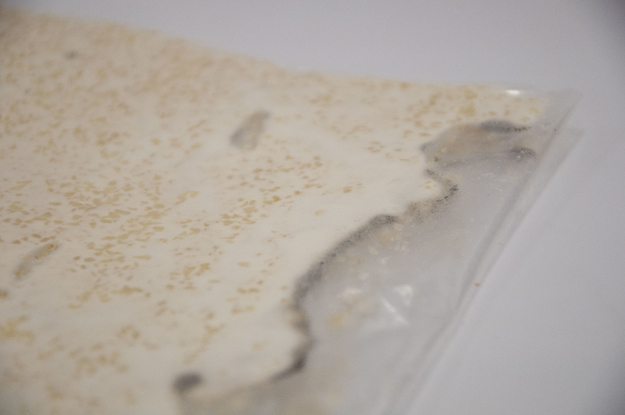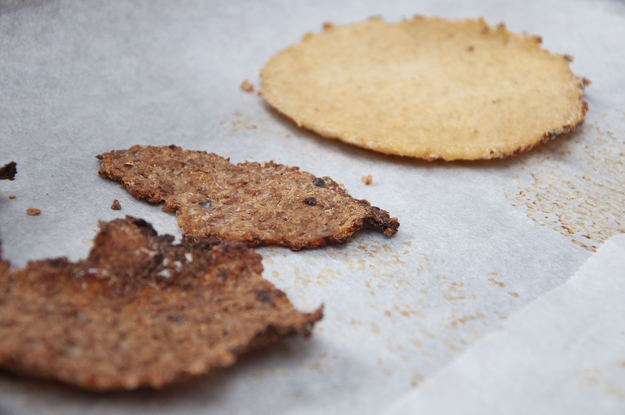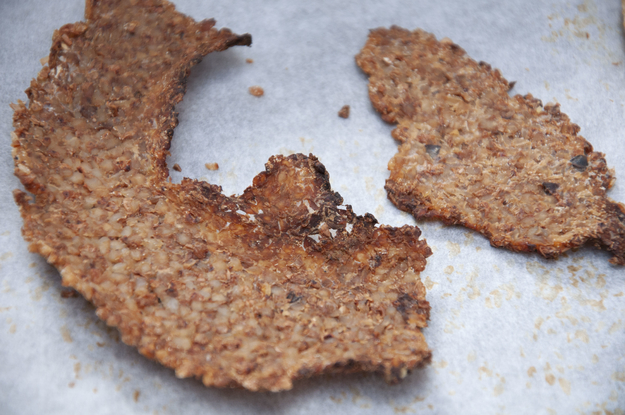We incubated this batch of material at 30-31˚C for 48 hours. Amongst these ingredients, buckwheat tempeh had the most growth. It smells nice as well: a fruity fresh smell, as is described by Willem. The bulgur tempeh grew normally, having a smell which reminded me of rice liquor in China, which is very pleasant to her. The other ingredients, unfortunately, due to unknown reasons, didn't inoculate the fungus.
Both the buckwheat and bulgur sheet tempeh had more fungus growth than their bowl shape tempeh. Both of them had some black spots, which is the spores of the fungus, completely edible.
Black Spots on the edge of bulgur tempeh sheet -

We baked both buckwheat and bulgur bowls at 135˚C for half an hour, and let people taste them.
Baked Bulgur and Buckwheat Tempeh Sheet -

Pierre Tastes Buckwheat Tempeh - Pierre tasted buckwheat tempeh: "I wouldn't eat this."

Here are their opinions
Bing: I like this! (buckwheat tempeh)
Pierre: I wouldn’t eat this.
Jiwei: It’s nice at first, but too sour in the end. It has a certain aroma.
Kamile: It’s like black bread. We have it in Lithuania. As a snack which we usually eat while having a beer we have fried black bread with cheese sauce.
The buckwheat tempeh and bulgur tempeh had similar taste, although bulgur tempeh had more neutralised taste for Kamile. However both of them had an unpleasant acidic taste. The sour taste is what Kamile and I both don’t like, so the next step is to reduce the sour taste. We thought it might be because of too much vinegar that we put in, which was used to create an prefered acidic environment for the fungus to grow. After some research, we found that we could also add vinegar while we boil the ingredients and adjust the PH value to around 4.8.
At the same time, new batches are made today, with black lentils, orange lentils and mung beans as substrate to test. The mung beans are mixed with starter culture without vinegar, which is a mistake, however maybe can test if the starter can grow without the help of vinegar.

